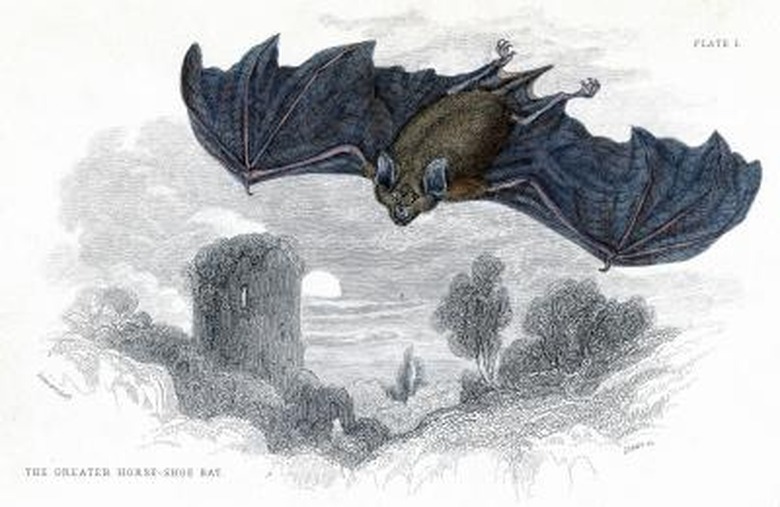How To Get Rid Of Bats Roosting In Eaves
Things Needed
-
Newspaper
-
Mesh bags
-
Mothballs
-
String
-
Outdoor light
-
Duct tape
-
Staple gun
-
Half-inch polypropylene structural-grad bird netting
Warning
Do not attempt to handle or touch any bats. Bats can carry the rabies virus, which is transmitted through their saliva and can be fatal to humans. However, if left undisturbed, bats present only a small threat to a home's human and animal inhabitants.
Bats roost in small spaces and can sometimes end up roosting in cracks and crevices around the home. In particular, bats often roost under the eaves of the house, in the space between the eaves and the wall. You may wish to discourage the bats because of their droppings and the noise that they make, as well as the risk of rabies. However, if these evidences of the bats' presence are not distressing to you, then they can be left in peace and will provide a valuable service in controlling pest insects around the house.
Step 1
Examine the sides of the house and the ground next to the house for bat droppings, which are small and dark, not white like bird droppings. These droppings will be concentrated under and around the area where the bats have been roosting, and this will tell you where to concentrate your bat-repelling efforts.
Step 2
Roll up a newspaper and slap the eaves and the side of the house where the bats are roosting. Do this in the daytime when the bats are present. Bats dislike noise, and this may drive them away.
Step 3
Fill a mesh bags with mothballs, and tie them to the eaves where the bats have been roosting. Mothballs are a chemical repellent, and their smell is unpleasant to bats.
Step 4
Install an outdoor light close to where the bats are roosting under the eaves. Bats dislike bright lights and will avoid the area if it is illuminated when they return to their roost early in the morning.
Step 5
Build a one-way exclusion gate out of bird netting to prevent the bats from re-entering their roost. Hang the netting around the gap between the eaves and the house, attaching it by three sides using the staples and the duct tape and leaving the bottom free. The netting needs to be attached several inches above the exit, and should extend by at least 2 feet on either side and below. By leaving the bottom free, the bats can drop out of the roost to feed but will not be able to get back inside when they return.
